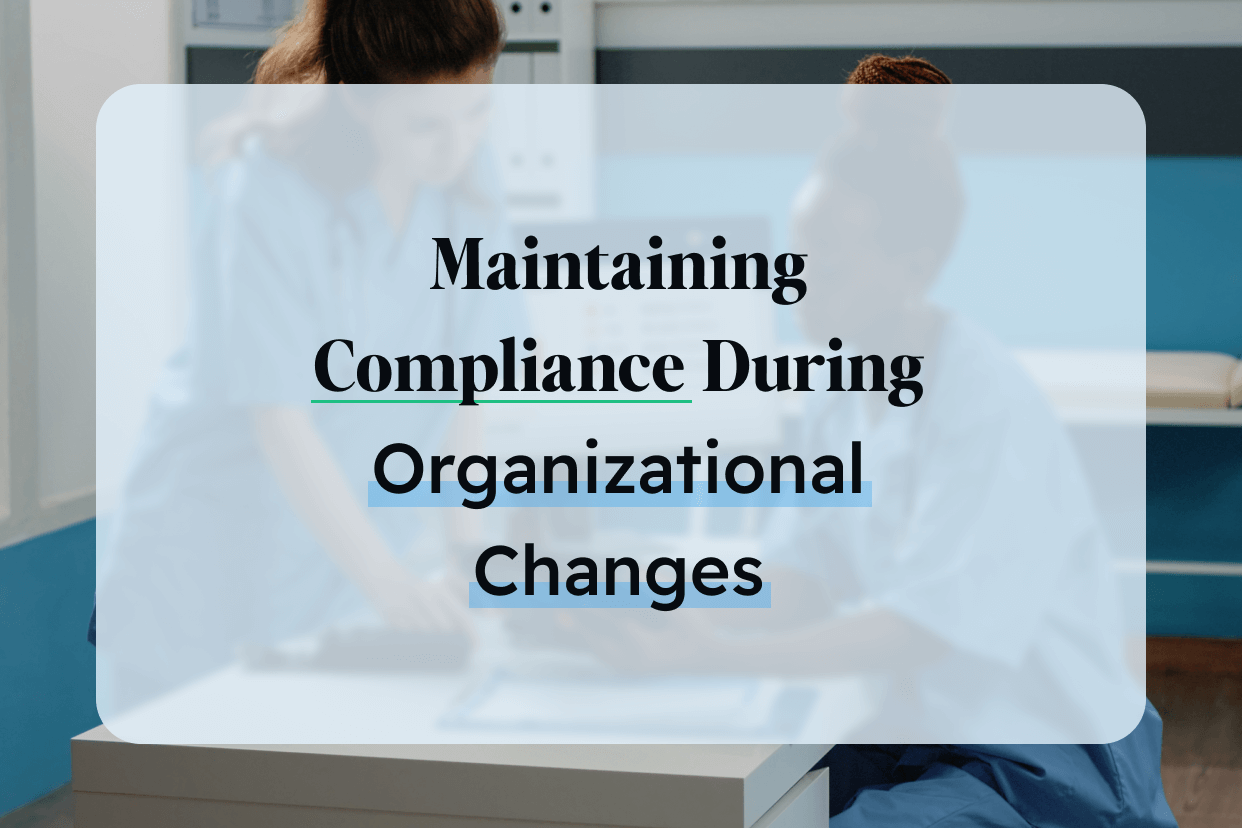Have you ever heard that the only constant in life is change? Well, it’s no different for Ambulatory Surgery Centers (ASCs). Whether through leadership turnover, mergers, expanding services, or restructuring, all ASCs will undergo an organizational change at some point.
Organizational changes occur for a variety of reasons, often driven by efforts to remain competitive, improve efficiency, meet evolving patient needs, or comply with other external demands. While change may be necessary, compliance cannot suffer as a result. No matter what, ASCs must maintain compliance to avoid regulatory violations, patient safety risks, and accreditation issues.
Fortunately, there are key tactics that can help ASCs stay compliant during these changes, and the order in which they are implemented is also important. Here are 5 simple steps to follow to ensure the best possible outcomes at your ASC:
Step 1. Assign a Compliance Officer or Task Force
Across a variety of different industries, task forces are put in place to ensure smooth transitions, implementation of new initiatives, and process monitoring. For an ASC looking to maintain compliance standards, the first step is to assign a clearly designated person or small team to take on the job.
This team should report directly to leadership and have access to all the compliance resources they may need, such as legal and regulatory counsel. Ensuring these responsibilities are delegated and monitored by capable people will help to carry out any other policies or procedures required to maintain compliance.
Step 2. Update and Communicate Policies and Procedures
Once a team is in place, their first task should be to review all existing policies to reflect any organizational changes. Once updated, they’ll also need to communicate policy changes clearly and effectively.
To do so, the team should ensure all staff have access to these policies in a secure, shared location. Additionally, all previous versions of the policies should be discarded, to ensure the new policies take precedence and there are no other versions. It is also necessary to have the staff review and learn updated policies to effectively abide by them.
This is where technology is uniquely helpful in policy sharing. With digital policy storage, previous versions of policies are immediately overwritten or archived when new policies are uploaded. The first time staff members utilize the new policies, automated workflows are put into place so that staff members read and acknowledge receipt, ensuring new information isn’t easily missed.
Step 3. Schedule Staff Training and Credentialing
During organizational changes, new staff members are often introduced, which requires training and credentialing. This is a good time to schedule mandatory staff training on HIPAA, infection control, life safety, OSHA, or CMS Conditions for Coverage. Having the staff complete the training at the same time can help to limit risk and maintain compliance, as everyone is operating with the same information fresh in their minds.
There is also the matter of maintaining proper credentialing and privileging for all new and existing staff members. In order to properly track that all staff members do not lapse on training, credentialing, or privileging, it’s important to document these details. Use a checklist to track all staff member’s names, latest training dates, expirations, and upcoming renewals.
Step 4. Conduct Internal Audits and Mock Surveys
Once the policies are updated and staff members are properly trained, verify that these measures have been effective by putting them to the test. To do this, schedule focused audits on high-risk areas such as controlled substances, documentation, billing, or sterilization processes. The task force can also help to schedule and perform mock surveys using AAAHC, Joint Commission, or CMS guidelines, depending on the type of accreditations required at the ASC.
Based on the result of these audits and mock surveys, you can better understand if policies need to be more detailed, if additional training is needed, and how to improve for the future.
Step 5: Keep Communication Channels Open
Last but certainly not least, organizational change requires more communication than normal. Therefore, establishing a cadence of reports, check-ins, and meetings throughout the process will be necessary.
For example, before and after each of the previous steps are completed, hold meetings between leadership, compliance, and department heads, to ensure all involved parties can provide feedback and are well informed of the ongoing tasks.
Staff members should also weigh in on how organizational change is impacting compliance standards. If possible, allow staff members to take anonymous surveys to report any compliance concerns, ensuring that nothing is missed along the way.
Maintaining compliance at your ASC during organizational change is a collaborative effort. While following these steps will help guide you on the right track, you can also rely on technology to help along the way. Reach out to Surglogs today for tips on how best to implement these steps, including digitizing your policies, checklists, and documents for enhanced compliance standards.

